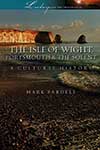|
Home | About Us
| Subscribe
| Advertise
| Other
Publications | Diary
| Offers
| Gallery
| More
Features | Obituaries
| Contact
|
|
|
|
|
|||
A copy of this book was received by the Editor following an email from Michael Bardell, formerly Grenadier Guards, whose brother, Professor Mark Bardell, is the author. Michael, who sailed on Gladeye in the 1960s, has lived in Zimbabwe for the last 50 years. Prior to that, he had a retirement job on HMS Victory as a tour guide. Many Guardsmen who have sailed in the Solent or from Seaview will be familiar with some of the places mentioned in this excellent cultural history, but of course there is much more about this stretch of the south coast that a week of sailing or a few hours in a sailing club could ever reveal. Portsmouth itself is very much a naval port, and there is much to see here without even venturing into the open sea. HMS Victory is there, looking tiny in amongst the higher Portsmouth sky line. HMS Warrior, the Royal Navy’s first ironclad, is not far away, sleek and black-hulled. Portsmouth is a place from which invasions have been launched, most notably the Normandy D-Day on 6th June 1944, and also from where invasions through the ages have been resisted; wonderfully Victorian built forts on the shoreline and in the Solent (‘Palmerston’s Follies’) attest to that particular heritage. The Isle of Wight is England’s largest island, and it has a distinct holiday feel about it, close yet separate to the mainland; Karl Marx described it as a ‘little paradise’. Osbourne House, sitting above the shoreline on the northern coast of the island, and designed by Prince Albert in the Italian Renaissance style, was a favourite home of Queen Victoria’s; it was here that she died in 1901. At the far western end of the island are The Needles, and many Guardsmen over the years will have easily sighted them on the port bow as Gladeye made passage towards Poole and Lulworth. This is a thoroughly well researched book and not a mere guide book. It is an in-depth cultural history which pulls together many themes that embrace literature, war, architecture, the sea, art, early aviation, travel, and holidays. This is a place where long sea journeys began and ended, and where much else happened besides. A copy should find its way on to Gladeye’s bookshelf; something to read during those occasional moments of calm while on board. The Editor
|
|||
|
|||

